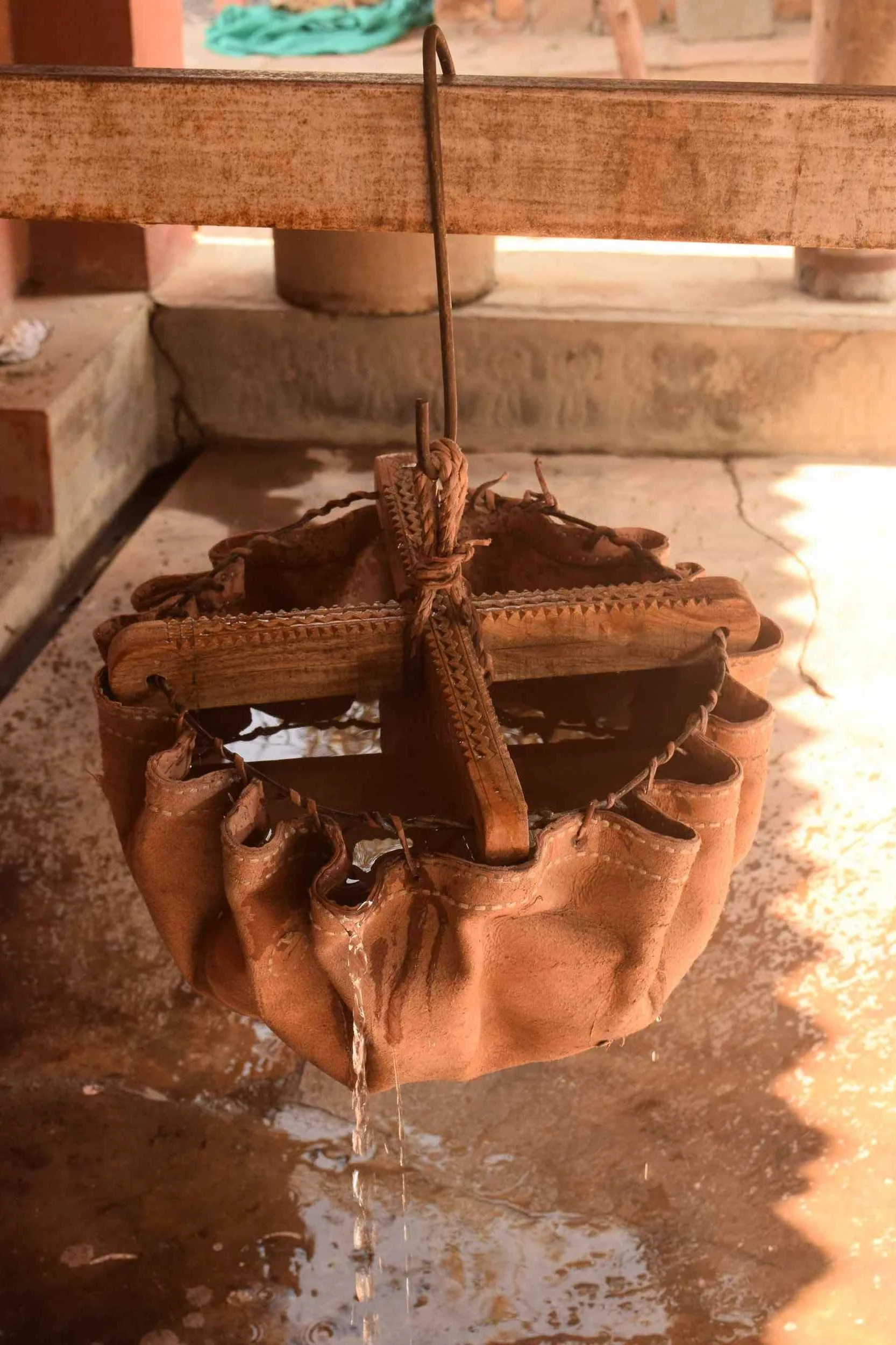
Chadai or Chadsi
These were made from soft goat leather to allow folding and were structured into a flexible bucket. Chadai of various sizes were used in areas with scarce and shallow water. The wooden component that held the leather piece and kept its mouth wide open was made by the carved wood artisans. The stitched leather was turned inside out to ensure that water remained in contact with the smoother side of the leather.
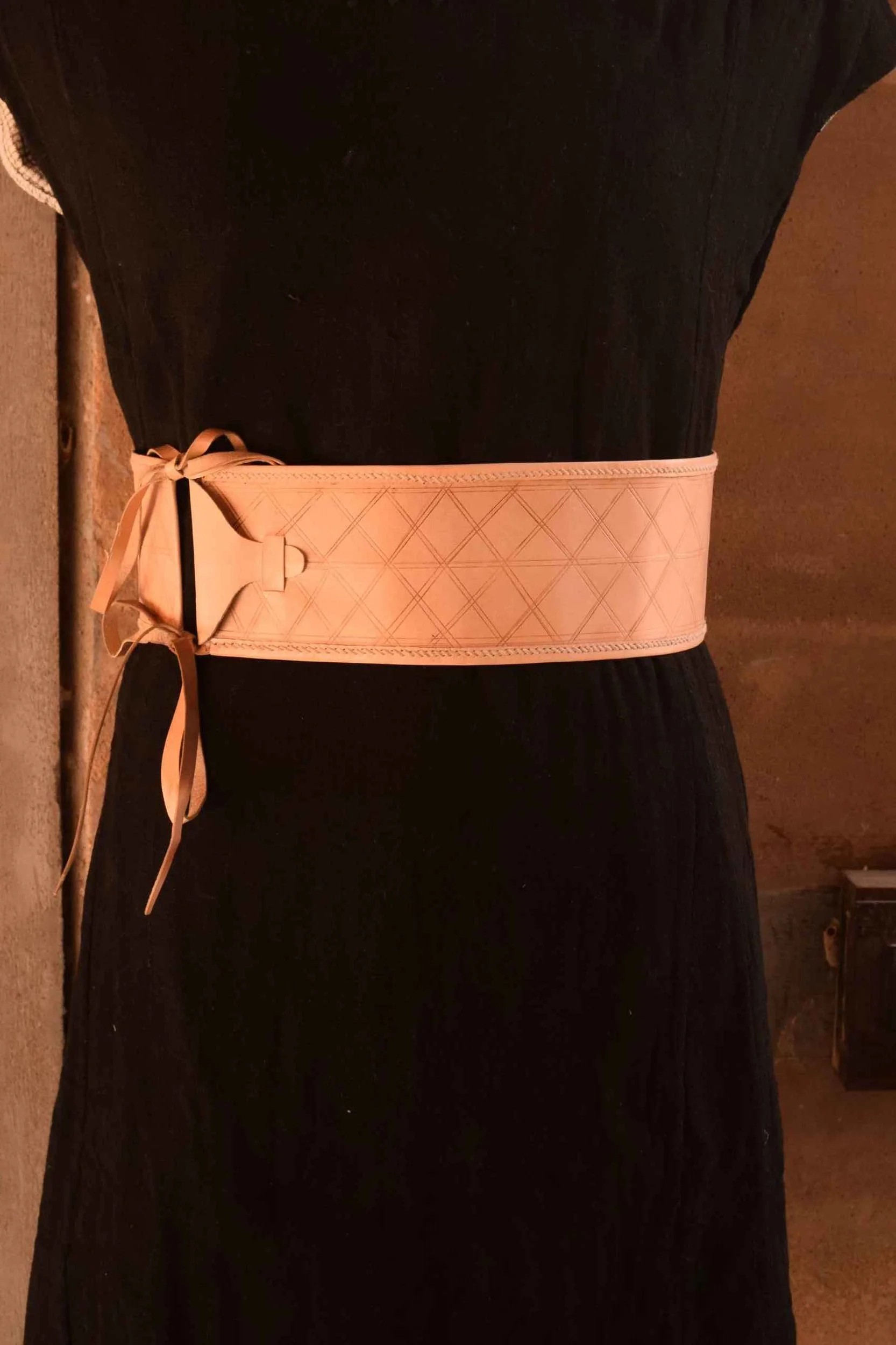
Noro
Made out of thin leather, noro was a hidden waist belt used to carry coins under the shirt. When the Maldharis of Banni moved with their animals and travel for selling ghee or clarified butter, they would often wear noro as a pouch for keeping coins.

Sandhaari
This vessel was made from goat leather. The skin was removed with a precaution such that it wouldn’t tear at critical joints and came out in one piece from the neck, back and limbs. The portion of neck was kept open as a mouth for the vessel and was closed with a leather string. The sandhaari was used by the Maldharis and other communities while traveling and feeding cattle. Due to its cooling properties, leather was considered an ideal material for water storage. The leather was turned inside out so that the cleaner and porous side of the skin was inwards which allowed water to seep out and evaporate, keeping the leather body and the water inside cool.A saandhaari could carry5-10 liters of water.
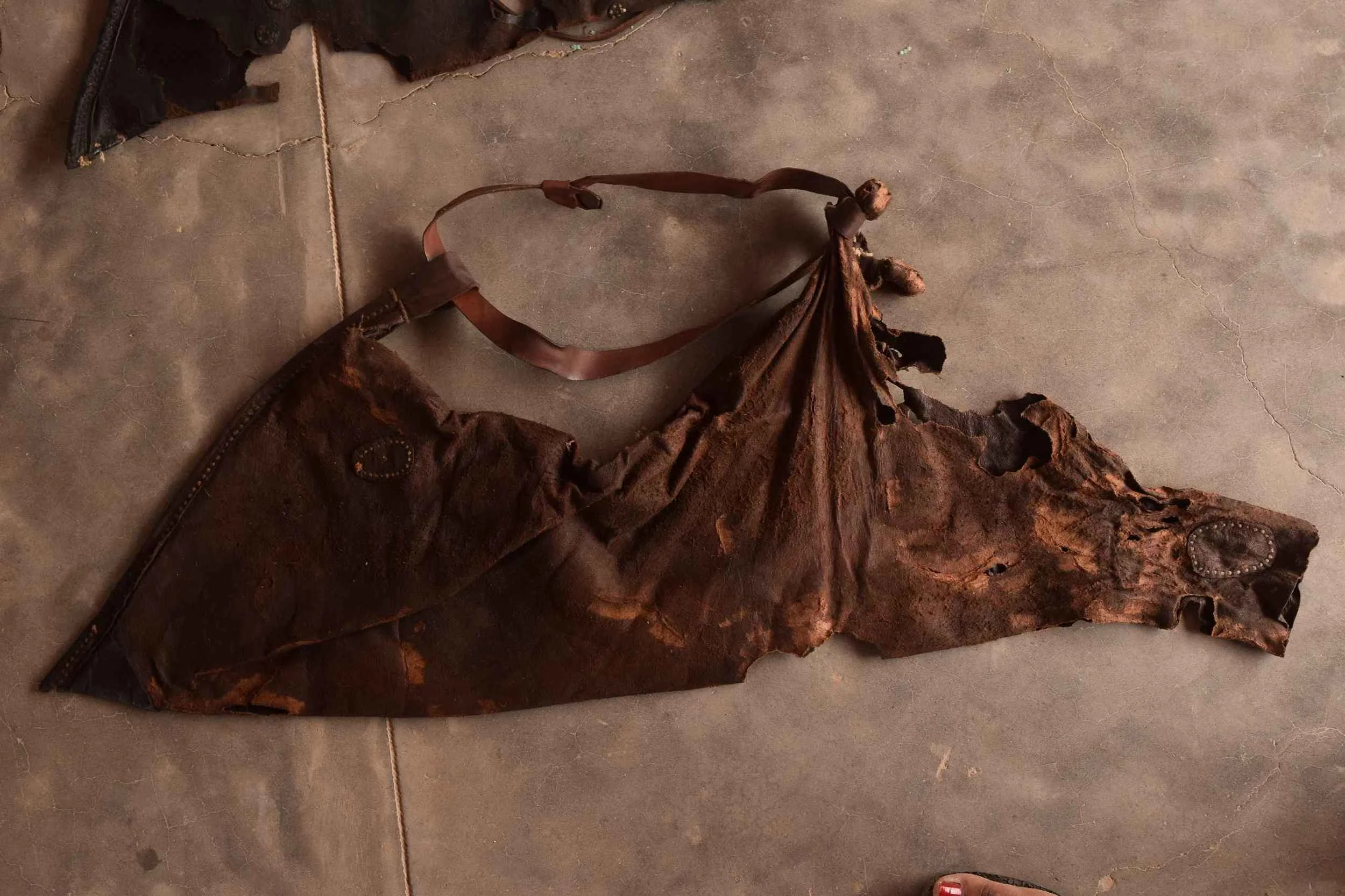
Sandhaaro
Bigger than the sandhaari, the sandhaaro was also made from goat leather and was used for storing water in gatherings where larger quantities were needed. It could contain up to 15-20 liters.
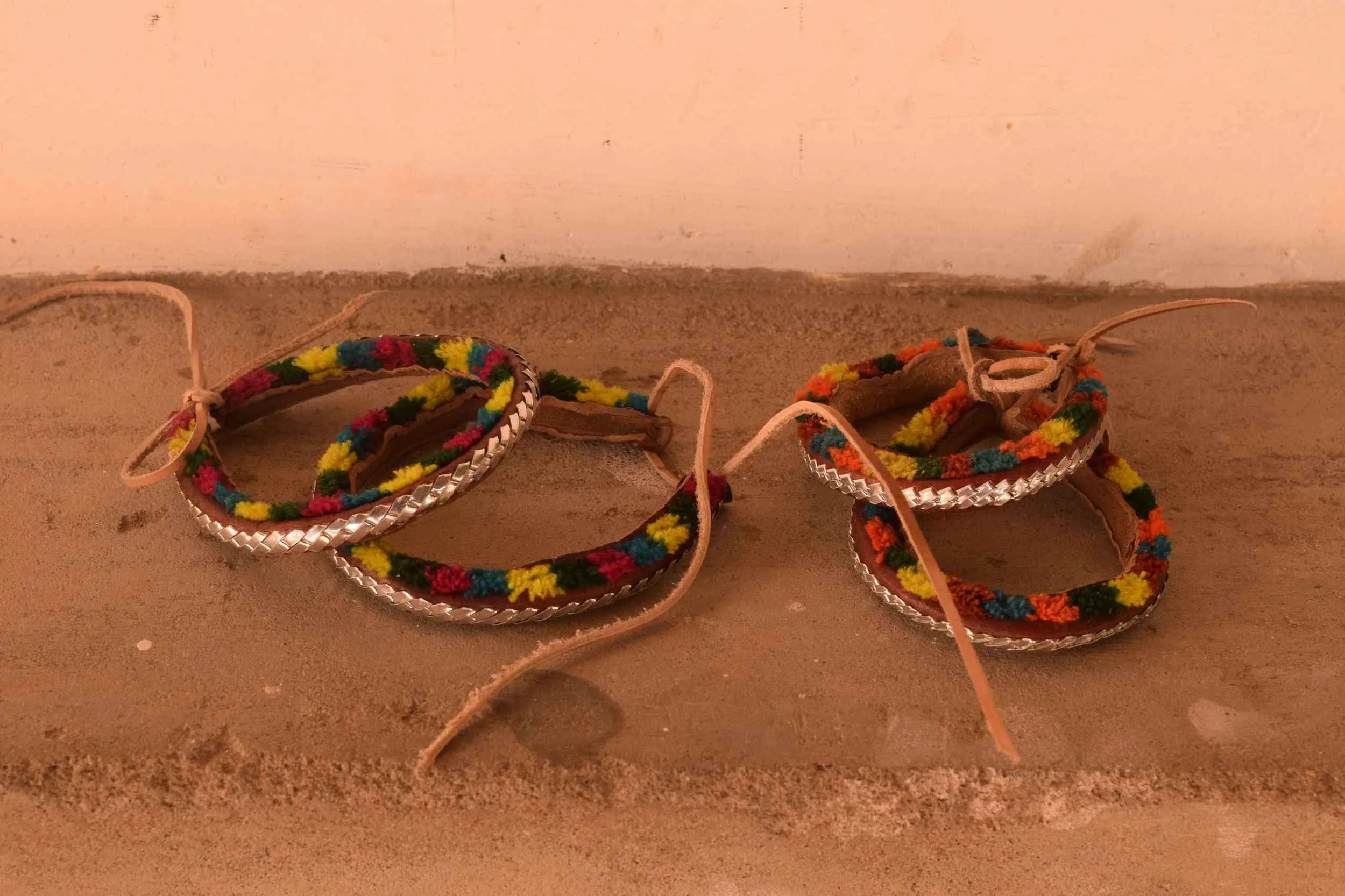
Kasiya
Meghwar women wear a set of ivory bangles on their upper arm as a mark of marriage. The kasiyawas tied at the elbow to prevent these bangles from slipping when they move.
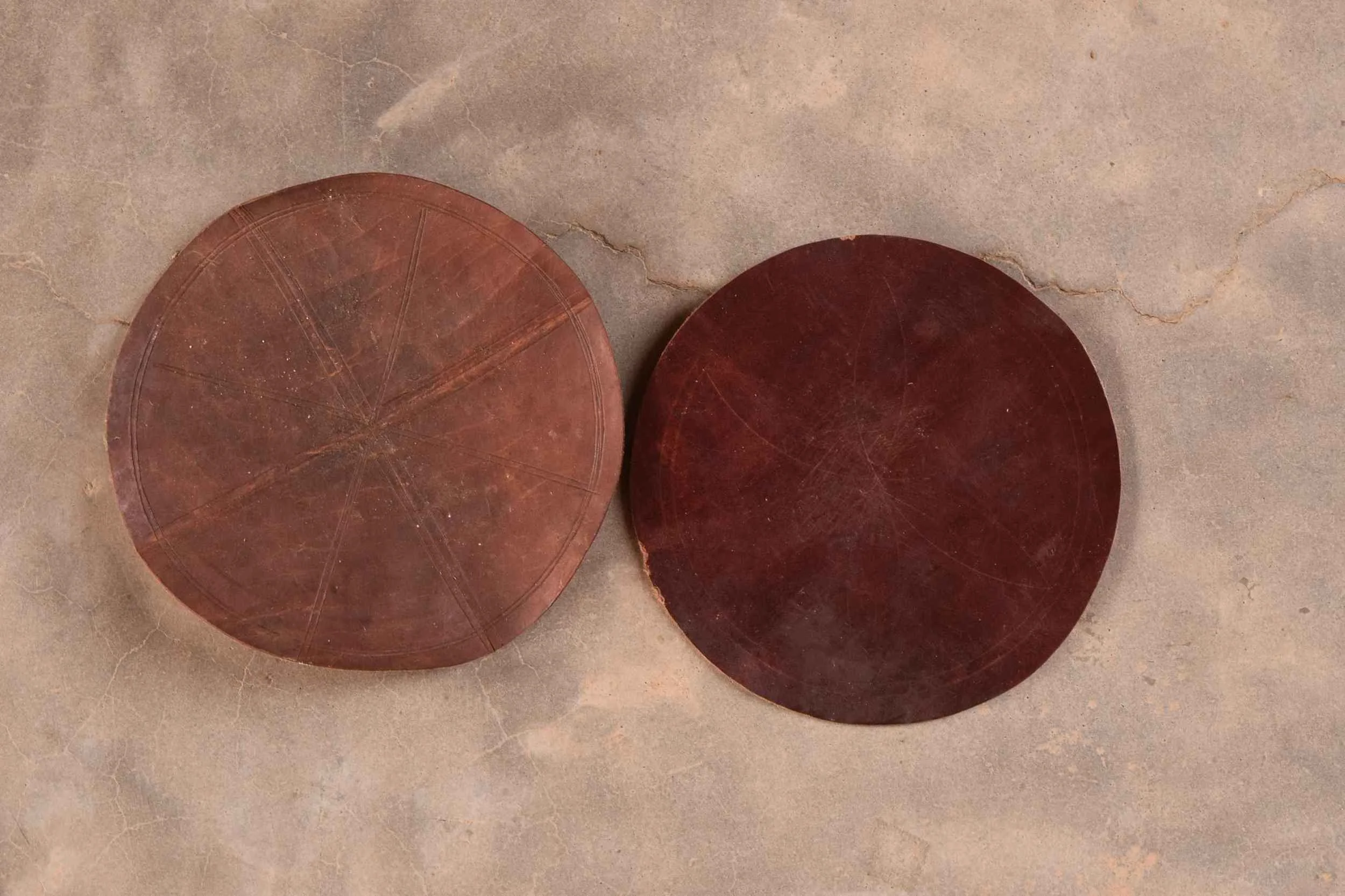
Taldi or Taalki
This circular piece of leather was kept under the head of a newborn baby to keep it cool and steady. On the sixth day after birth, when the baby is ritually welcomed in the family, a leather artisan would bring the taalki to the family and be suitably rewarded. The taalki is variously known as chhithri, khaladi, khadki and sagi by various communities in Banni. It is still commonly used across Kutch and sourced locally from the leather artisans. The family would apply oil on to it to keep the leather cool for the baby’s head.

Netro
This leather string with two wooden pieces on each end helped rotate the mandhdi, the stick for churning chhaas or buttermilk. Chhaas was, and still is, an important part of the daily diet due to the predominant milk economy of the region. It is also said to keep the body cool in the extreme heat.

Cheliya
This leather belt was wrapped around the neck of the pot and fastened against a pole or wall to keep it intact while churning chhaas.

Talwaar Mayaan and Patto
A leather cover to hold the sword was an important part of the bridegroom’s dress and was fitted into a patto, a leather waist belt. Adorned with intricate zari work, the product was perfect for a wedding. It is still worn in Hindu weddings across Gujarat.

Ludaniya
This set of two ropes with loops on both the ends was tied on the cradle, with one end held for rocking. It was made by twisting leather strings together to add to its strength. It was common across all Kachchi communities.

Mann
This is an example of the amalgamation of two crafts - a terracotta pot with a piece of leather on its mouth. It is still a very popular form of percussion in Kachchhi folk music in the Banni region. The musician would select the desired pot from the potter and take it to a leather artisan for the leather piece, which has to be very thin and preferably of a young goat. He would sit with the artisan, adjust and tune it and then tie the leather piece accordingly. It produces a distinct echoed sound and has to be wetted from time to time.










